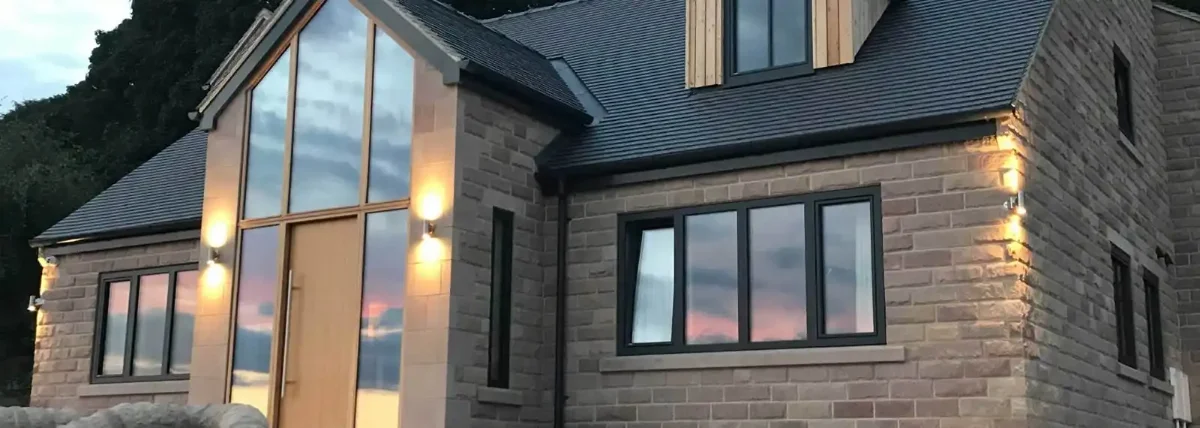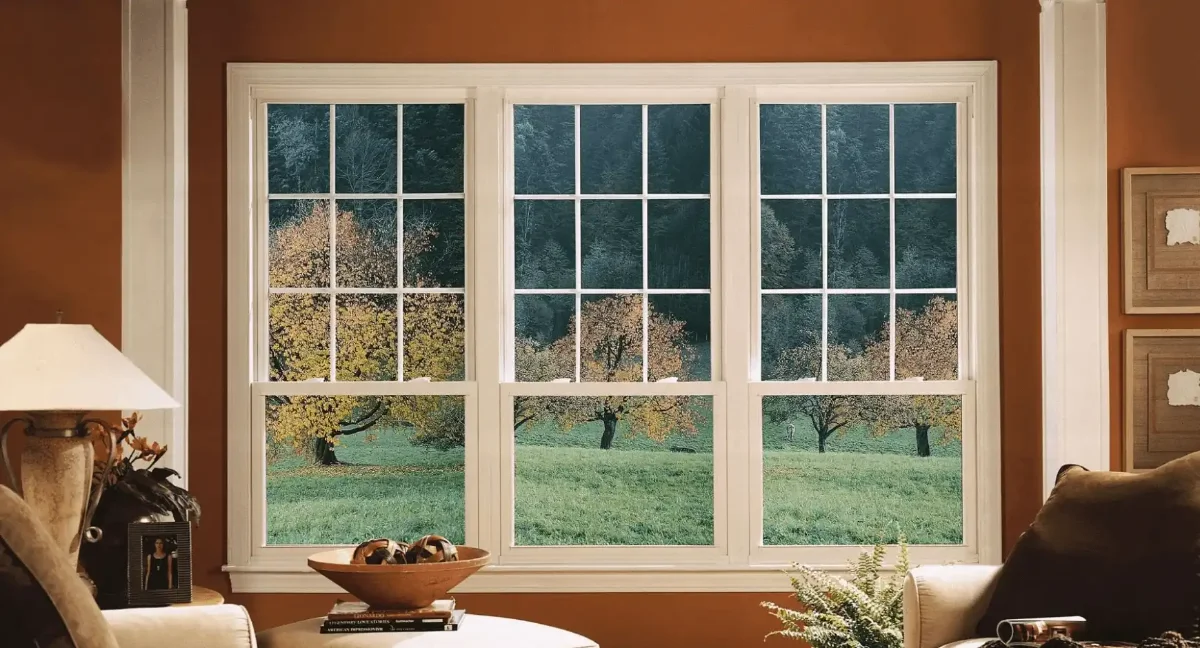Decoding Window Energy Ratings: Your Complete Guide
Confused by U-values, G-values, and SHGC ratings when shopping for new windows? You’re not alone. These technical specifications are crucial for choosing energy-efficient windows, but they’re often poorly explained by salespeople who don’t fully understand them themselves.
I’m Oliver Greene, and in my 38 years in the UK window industry, I’ve seen countless homeowners make costly mistakes because they didn’t understand these fundamental energy ratings. Today, I’ll decode every aspect of window energy performance in plain English, so you can make informed decisions that will save money for decades.
Understanding these ratings isn’t just about compliance with Building Regulations – it’s about creating a comfortable, efficient home while reducing your environmental impact and energy bills.
For comprehensive information on energy-efficient window options, see our detailed energy-efficient windows guide. To understand how different glass types affect performance, explore our low-E glass comparison. For real-world energy savings examples, read our double glazing energy bills case study.
Want to calculate potential energy savings for your home? Use our interactive efficiency calculator to see how different window ratings translate to real pound savings on your heating bills.
U-Value: The Insulation Champion
What It Measures: U-value indicates how much heat passes through your windows. Think of it as the opposite of insulation – lower numbers mean better performance.
The Technical Definition: U-value measures watts of heat loss per square metre of window area, per degree of temperature difference between inside and outside (W/m²K).
Real-World Translation:
- Single glazing: 4.8-5.8 W/m²K (terrible insulation)
- Basic double glazing: 2.8-3.2 W/m²K (poor by today’s standards)
- Quality double glazing: 1.2-1.6 W/m²K (good performance)
- Triple glazing: 0.8-1.2 W/m²K (excellent insulation)
Why U-Value Matters for Your Bills
A window with U-value 1.2 W/m²K loses half as much heat as one rated 2.4 W/m²K. For a typical home with 20 square metres of windows, this difference costs approximately £300 annually in heating bills.
Oliver’s Insight: “I always tell clients to think of U-value like a leaky bucket. The lower the U-value, the smaller the holes. You wouldn’t choose a bucket full of holes to carry water, so why choose windows full of thermal holes to keep heat in?”
G-Value: Managing Solar Heat Gain
What It Measures: G-value (also called Solar Factor) indicates how much solar energy passes through your windows as heat.
The Scale: G-values range from 0 to 1:
- 0.7+ G-value: High solar heat gain (lots of free heating)
- 0.4-0.7 G-value: Moderate solar heat gain (balanced performance)
- Below 0.4 G-value: Low solar heat gain (minimal solar heating)
The G-Value Balancing Act
South-facing windows: Higher G-values (0.6-0.7) capture valuable winter sun for free heating North-facing windows: G-value less critical as they receive minimal direct sun West-facing windows: Lower G-values (0.4-0.5) prevent summer overheating
Case Study: A Bishop’s Stortford client saved £180 annually by specifying high G-value windows on south-facing rooms and low G-value units on west-facing bedrooms, eliminating overheating while maximising winter solar gain.
SHGC: The American Cousin
What It Is: Solar Heat Gain Coefficient (SHGC) is the American equivalent of G-value, measuring the same solar heat transmission.
Key Difference: SHGC uses a 0-1 scale identical to G-value, but appears on some imported window systems and technical literature.
Practical Application: If you see both ratings, G-value = SHGC. Use whichever specification is provided – they’re interchangeable for UK applications.
BFRC Labels: Your Energy Efficiency Roadmap
The British Fenestration Rating Council (BFRC) provides standardised energy labels similar to those on appliances, making window comparison simple.
Reading BFRC Labels Like a Pro
Energy Rating Bands:
- A++: Outstanding performance (rare, premium windows)
- A+ to A: Excellent efficiency (recommended choice)
- B to C: Good performance (acceptable for most homes)
- D to G: Poor efficiency (avoid these options)
Key Information on Labels:
- Overall Energy Rating: Combines U-value, G-value, and air leakage
- U-Value: Thermal insulation performance
- Effective Heat Loss: Annual heat loss in kWh/m²
- Solar Heat Gain: Annual solar energy gain in kWh/m²
What BFRC Ratings Mean for Your Bills
A+ Rated Windows: Typically save £15-25 per square metre annually compared to C-rated alternatives B Rated Windows: Offer good value, saving £8-15 per square metre annually C Rated or Below: False economy – higher heating bills quickly offset any purchase savings
Building Regulations: The Legal Minimums
Current UK Requirements (2025):
- New windows: Maximum U-value 1.6 W/m²K
- Replacement windows: Maximum U-value 1.6 W/m²K
- Extensions: Maximum U-value 1.6 W/m²K
Oliver’s Recommendation: “Meeting minimum standards is like aiming for a D-grade in school – you pass, but why not excel? Specify windows with U-values under 1.2 W/m²K for real performance.”
Part L Compliance Made Simple
Building Regulations Part L focuses on energy conservation. Your windows must either:
- Meet individual U-value limits (1.6 W/m²K), OR
- Contribute to overall dwelling compliance through SAP calculations
For detailed Part L guidance, see our comprehensive Part L compliance guide.
Frame Materials and Energy Performance
Different frame materials dramatically affect overall window energy ratings:
uPVC Frames
- Typical U-values: 1.2-1.6 W/m²K
- Advantages: Good insulation, cost-effective
- Limitations: Bulky profiles needed for best performance
Aluminium Frames
- Typical U-values: 1.4-2.0 W/m²K (without thermal break), 1.0-1.4 W/m²K (with thermal break)
- Advantages: Slim profiles, durability
- Requirements: Thermal breaks essential for efficiency
Timber Frames
- Typical U-values: 1.0-1.4 W/m²K
- Advantages: Natural insulation, sustainability
- Considerations: Quality varies significantly between suppliers
For detailed material comparisons, explore our guides on aluminium windows and timber windows.
Glass Technology: Where the Magic Happens
Modern glass technology drives window energy performance through sophisticated coatings and gas fills.
Low-E Coatings Explained
What They Do: Microscopic metallic coatings reflect heat back into rooms while allowing light through Performance Impact: Improve U-values by 0.3-0.5 W/m²K compared to standard glass Cost: Add £50-100 per window but pay for themselves within 2-3 years
Gas Fills: Better Than Air
Argon Gas: Standard upgrade, improves U-values by 0.1-0.2 W/m²K Krypton Gas: Premium option, offers slightly better performance but at higher cost
For comprehensive gas fill comparison, see our detailed argon vs krypton gas guide.
Warm Edge Spacers: The Unsung Heroes
The spacer bar between glass panes significantly affects overall window performance.
Standard Aluminium Spacers: Create thermal bridges, reducing efficiency Warm Edge Spacers: Insulated spacers improve U-values by 0.1-0.3 W/m²K Cost vs Benefit: Small upgrade cost (£20-40 per window) with measurable energy savings
Learn more about spacer technology in our warm edge spacer comparison.
Calculating Real-World Savings
Understanding ratings is pointless without knowing their financial impact. Here’s how to calculate potential savings:
The Simple Formula
Annual Savings = (Old U-value - New U-value) × Window Area × Degree Days × 24 × £0.07
Example Calculation:
- Replacing 20m² of single glazing (U-value 5.0) with A-rated double glazing (U-value 1.2)
- UK average degree days: 2,100
- (5.0 - 1.2) × 20 × 2,100 × 24 × £0.07 = £1,345 annual savings
Payback Periods
Premium A+ Windows: 4-6 year payback through energy savings Standard A-rated Windows: 6-8 year payback B-rated Windows: 8-12 year payback
Choosing the Right Ratings for Your Home
South-Facing Rooms
- Recommended U-value: Under 1.2 W/m²K
- Recommended G-value: 0.6-0.7 (capture winter sun)
- Priority: Balance insulation with solar gain
North-Facing Rooms
- Recommended U-value: Under 1.0 W/m²K
- G-value: Less critical (0.4-0.6 acceptable)
- Priority: Maximum insulation
Bedrooms and Living Areas
- Summer comfort: Consider lower G-values (0.4-0.5) for west-facing windows
- Year-round efficiency: Prioritise low U-values (under 1.2 W/m²K)
Common Rating Mistakes to Avoid
Mistake 1: Focusing Only on U-Values
Why It’s Wrong: Ignoring G-values can lead to overheating or missed solar gains Solution: Consider both ratings together for optimal performance
Mistake 2: Accepting Minimum Standards
Why It’s Wrong: Building Regulations minimums are outdated for today’s energy costs Solution: Specify A-rated windows for long-term value
Mistake 3: Believing Manufacturer Claims
Why It’s Wrong: Marketing materials often quote best-case scenarios Solution: Always request BFRC certificates for independent verification
The Future of Window Energy Ratings
Emerging Standards
- PassivHaus certification: Ultra-low U-values (0.8 W/m²K or better)
- Net-zero requirements: Driving demand for A++ rated windows
- Smart glass integration: Dynamic ratings that adjust to conditions
Technology Developments
- Vacuum glazing: Achieving U-values under 0.5 W/m²K
- Aerogel insulation: Revolutionary insulation materials
- Electrochromic glass: Variable G-values on demand
Making Your Energy Rating Decision
Ready to choose windows based on performance rather than price alone? Here’s your action plan:
- Calculate Current Performance: Estimate existing window U-values
- Set Performance Targets: Aim for U-values under 1.2 W/m²K
- Request BFRC Certificates: Verify all performance claims
- Consider Whole-House Impact: Balance different ratings for different orientations
- Calculate Payback Periods: Justify premium options through energy savings
Transform your home’s energy efficiency with properly rated windows. Contact our expert team for a free energy assessment and discover which ratings deliver the best value for your specific property and usage patterns.
Understanding window energy ratings empowers you to make informed decisions that will reduce bills, improve comfort, and increase property value for decades. Don’t let confusing technical jargon prevent you from achieving optimal performance – armed with this knowledge, you can confidently specify windows that deliver real-world results.
Ready to put this knowledge into practice? Use our interactive efficiency calculator to see how different window ratings translate to actual savings for your home, or download our technical specification guide for detailed performance comparisons.




_fill(transparent) (1)_compressed-geotagged.webp)
